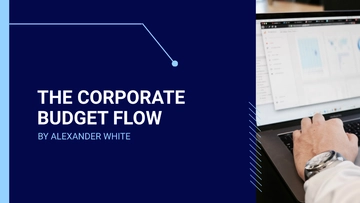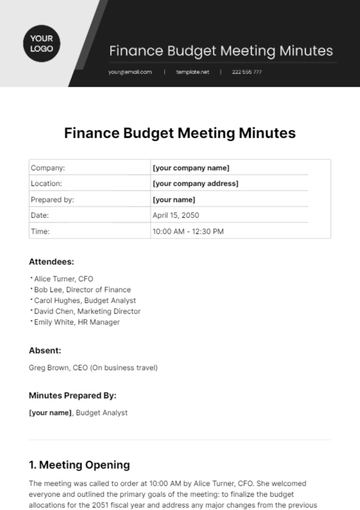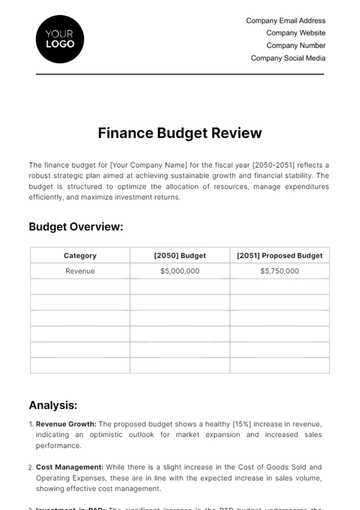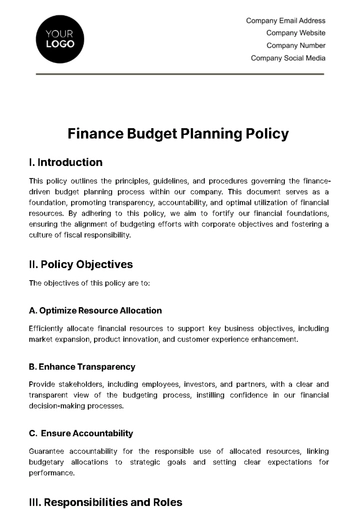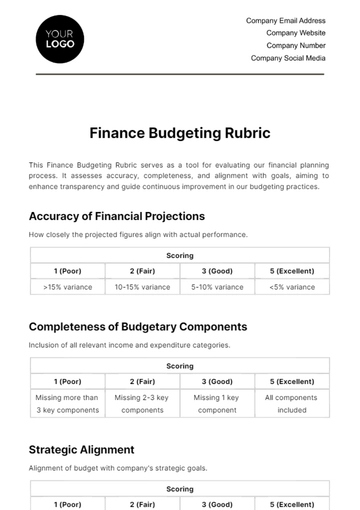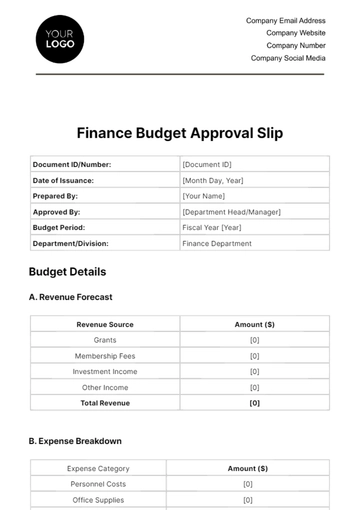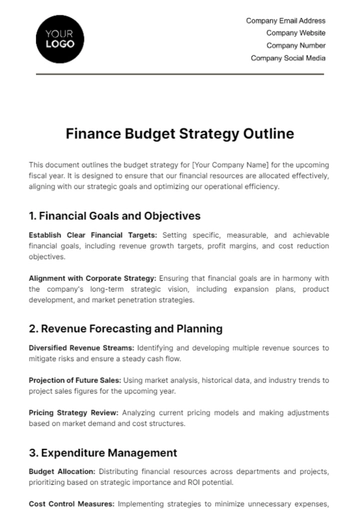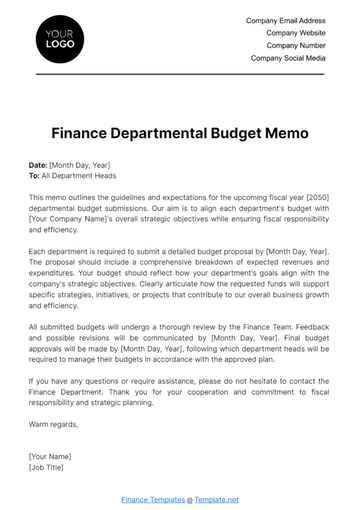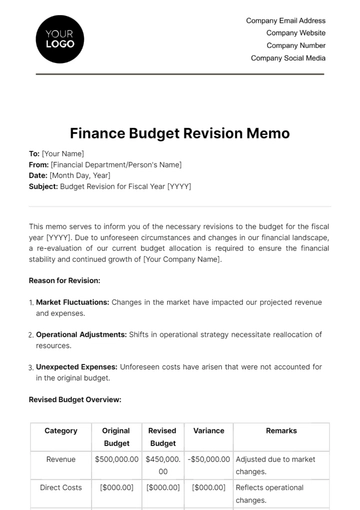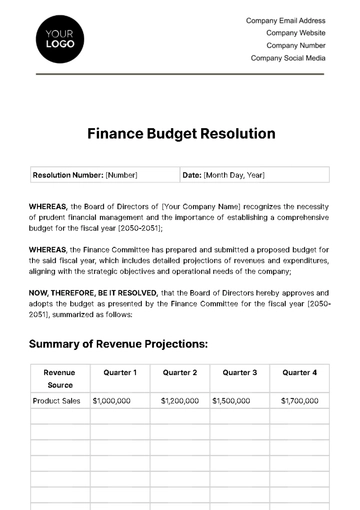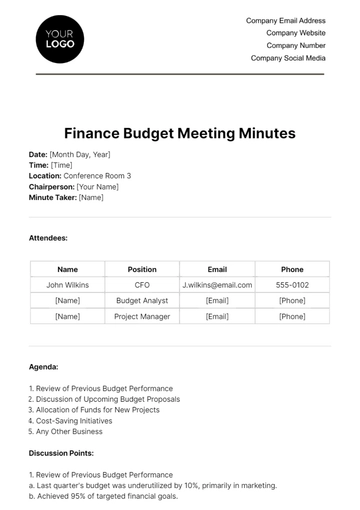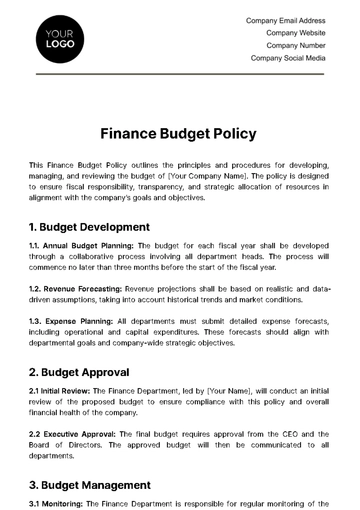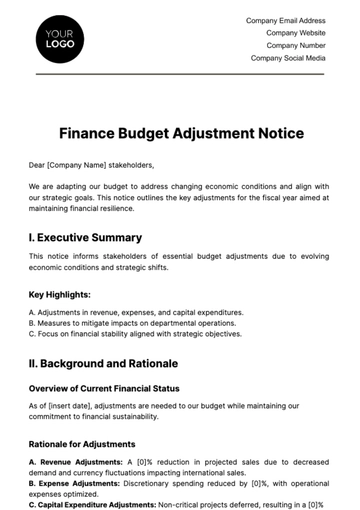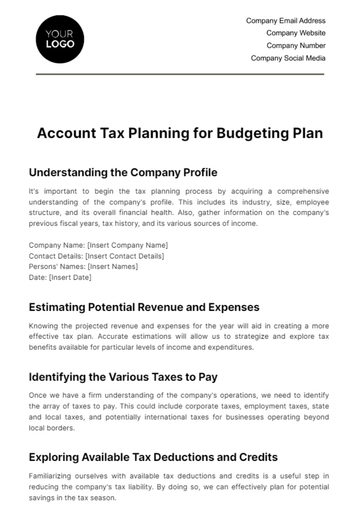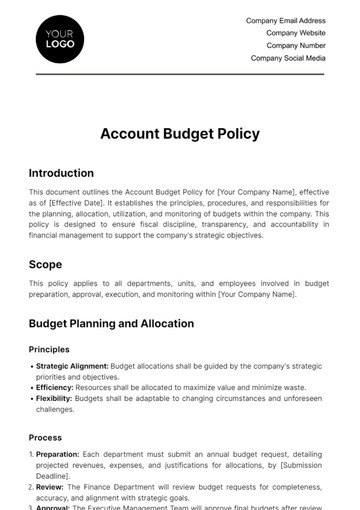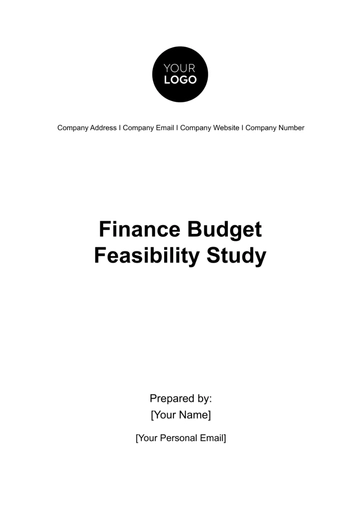Free Finance Budget Justification Report
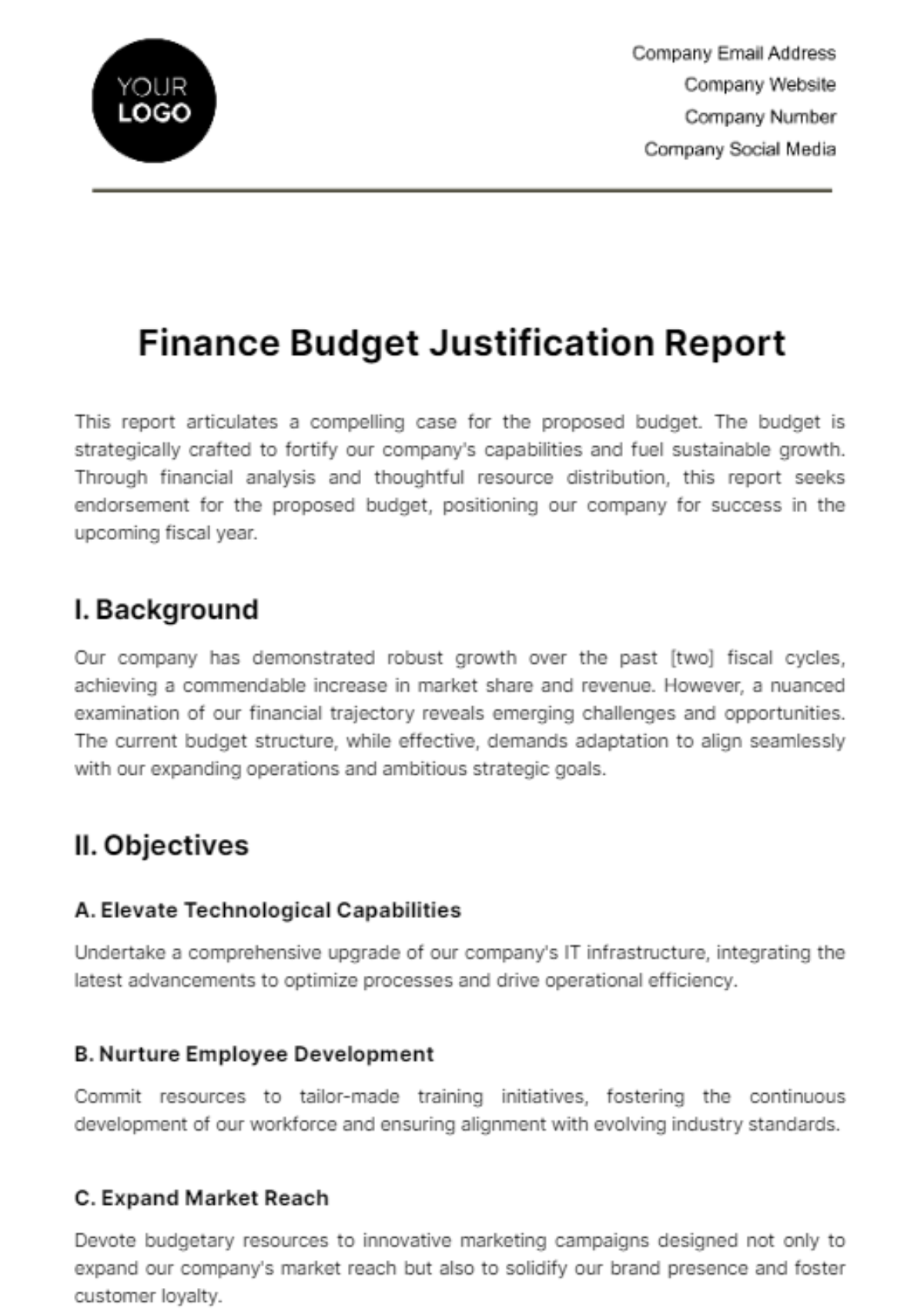
This report articulates a compelling case for the proposed budget. The budget is strategically crafted to fortify our company's capabilities and fuel sustainable growth. Through financial analysis and thoughtful resource distribution, this report seeks endorsement for the proposed budget, positioning our company for success in the upcoming fiscal year.
I. Background
Our company has demonstrated robust growth over the past [two] fiscal cycles, achieving a commendable increase in market share and revenue. However, a nuanced examination of our financial trajectory reveals emerging challenges and opportunities. The current budget structure, while effective, demands adaptation to align seamlessly with our expanding operations and ambitious strategic goals.
II. Objectives
A. Elevate Technological Capabilities
Undertake a comprehensive upgrade of our company's IT infrastructure, integrating the latest advancements to optimize processes and drive operational efficiency.
B. Nurture Employee Development
Commit resources to tailor-made training initiatives, fostering the continuous development of our workforce and ensuring alignment with evolving industry standards.
C. Expand Market Reach
Devote budgetary resources to innovative marketing campaigns designed not only to expand our company's market reach but also to solidify our brand presence and foster customer loyalty.
III. Scope of the Proposal
A. Strategic Budget Allocations
The proposed budget meticulously allocates funds for pivotal areas, including advanced IT upgrades, targeted employee training, and creative marketing initiatives.
B. Timely Implementation
The budget spans the fiscal year, with a phased implementation plan ensuring the timely execution of IT upgrades in the first half and the initiation of marketing campaigns in the third quarter.
IV. Financial Analysis
A. Cost-Benefit Analysis
A meticulous cost-benefit analysis reveals a judicious investment strategy, showcasing the potential for significant returns through anticipated revenue growth and operational cost efficiencies.
B. Return on Investment (ROI)
Specific focus is given to ROI, highlighting the direct correlation between proposed expenditures and the expected financial returns.
C. Sensitivity Analysis
A sensitivity analysis was conducted to gauge the budget's resilience to potential economic fluctuations, ensuring a robust financial strategy.
V. Alternatives Considered
A. Diverse Alternatives Identified
A spectrum of alternatives was considered, ranging from a singular focus on marketing to exclusive investment in technology or a conservative adjustment for employee development.
B. Strategic Evaluation
Rigorous evaluation based on strategic impact led to the selection of a balanced budget approach, effectively addressing multiple critical facets of company advancement.
VI. Risk Assessment
A. Holistic Risk Identification
Thorough risk identification encompasses potential challenges, including possible delays in IT implementations and uncertainties associated with the effectiveness of marketing strategies.
B. Comprehensive Risk Mitigation
Robust risk mitigation strategies involve proactive contingency plans for potential project delays and a dynamic approach to marketing strategy refinement based on real-time feedback.
VII. Implementation Plan
A. Milestones and Timelines
The detailed implementation plan outlines specific milestones, such as the completion of intricate IT upgrades by the end of the second quarter and the strategic initiation of marketing campaigns in the third quarter.
B. Resource Allocation Breakdown
Financial resources are allocated proportionally to each phase, emphasizing the importance of balanced investments in technology, employee development, and marketing. This strategic allocation ensures that each component receives the necessary support for successful execution.
C. Cross-Departmental Collaboration
Emphasis is placed on fostering collaboration between departments, ensuring a cohesive and synchronized execution of the proposed plan. Regular collaborative sessions, involving key stakeholders from different departments, are scheduled to ensure a cohesive and synchronized execution of the proposed plan.
VIII. Impact on Operations
A. Strategic Operational Implications
The proposed budget promises transformative outcomes, including heightened technological capabilities, a more adept workforce, and an elevated market presence—culminating in an overarching enhancement of operational efficiency.
B. Cross-Functional Integration
The implementation of proposed changes will necessitate enhanced cross-functional integration. By fostering collaboration between departments, our company can break down silos, facilitating seamless communication and coordination.
C. Operational Resilience
The proposed initiatives are designed to fortify our company's operational resilience in the face of external challenges. By investing in employee development and technological advancements, our workforce will be better equipped to adapt to unforeseen circumstances.
The proposed budget stands as a strategic blueprint aligned with our company's aspirations. The comprehensive approach, encompassing technology, talent, and market expansion, positions our company for sustained success. It is strongly recommended for approval, signifying an investment in our collective potential and positioning our company to not only meet but exceed the challenges of the upcoming fiscal year.
- 100% Customizable, free editor
- Access 1 Million+ Templates, photo’s & graphics
- Download or share as a template
- Click and replace photos, graphics, text, backgrounds
- Resize, crop, AI write & more
- Access advanced editor
Introducing Template.net's Finance Budget Justification Report Template. It's fully editable and customizable, allowing you to justify every financial decision with clarity and precision. With our intuitive AI Editor Tool, streamline your budgeting process and communicate effectively with stakeholders. Empower your financial planning with Template.net's innovative solutions.
You may also like
- Budget Sheet
- Personal Budget
- Non Profit Budget
- Monthly Budget
- Project Budget
- HR Budget
- Company Budget
- Home Budget
- Weekly Budget
- College Budget
- Business Budget
- Construction Budget
- Small Business Budget
- Hotel Budget
- Annual Budget
- Home Renovation Budget
- Household Budget
- Student Budget
- Grocery Budget
- Marketing Budget
- Corporate Budget
- Startup Budget
- Manufacturing Budget
- Church Budget
- University Budget
- Annual Budget Plan
- Event Budget
- Operating Budget
- Travel Budget
- Food Budget
- IT and Software Budget
- School Budget
- Real Estate Budget
- Sales Budget
- Conference Budget
- Budget Finance
- Freelancer Budget
- Budget Advertising
